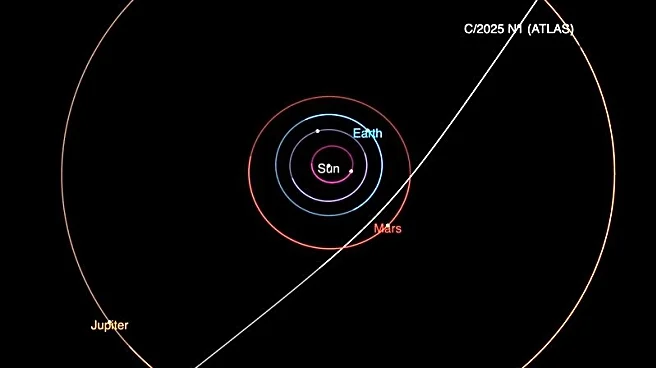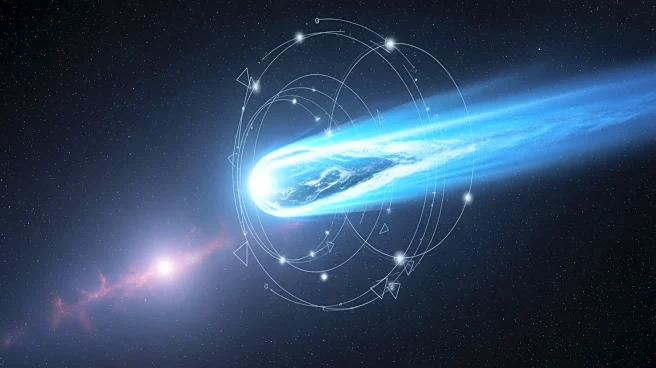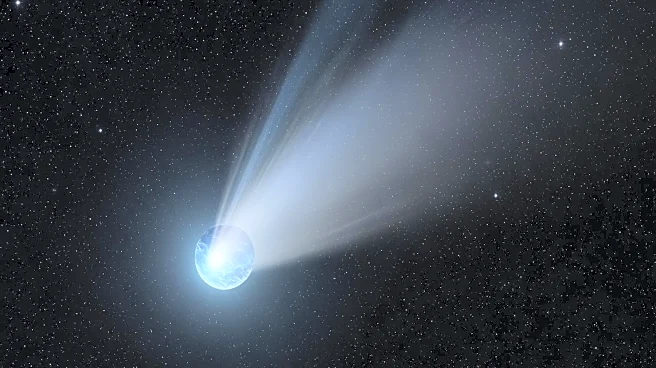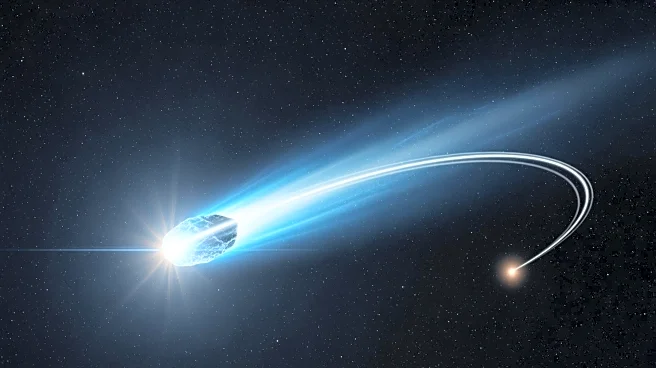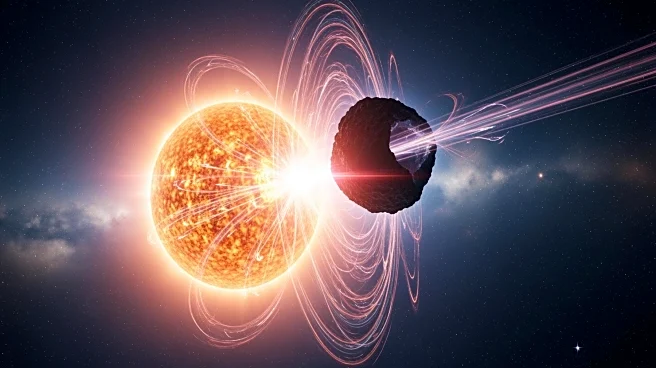What's Happening?
During a NASA news conference, panelists confirmed that Comet 3I/ATLAS is a natural interstellar object, not alien technology. The comet, discovered by the ATLAS telescope in Chile, has sparked debates
due to its unusual trajectory and size. Harvard astrophysicist Avi Loeb suggested it might be alien technology, but NASA's observations from multiple spacecraft, including the Mars Reconnaissance Orbiter and MAVEN, have provided detailed images and data confirming its natural composition. The comet will make its closest approach to Earth on December 19, 2025, at a distance of 170 million miles, and will continue its journey through the solar system, passing Jupiter's orbit in spring 2026.
Why It's Important?
The confirmation of 3I/ATLAS as a natural comet is crucial for understanding interstellar objects and their role in the solar system. The comet's study offers insights into the composition and behavior of objects from other star systems, contributing to our knowledge of planetary formation and evolution. NASA's observations help dispel speculative theories, emphasizing the importance of scientific evidence in space exploration. The event highlights the role of international collaboration, as data from various missions contribute to a comprehensive understanding of this ancient object.
What's Next?
As 3I/ATLAS approaches its closest point to Earth, more telescopes will observe the comet, providing additional data on its composition and trajectory. NASA and other space agencies will continue to monitor the comet as it moves through the solar system, with observations expected to continue into 2026. The comet will remain a target for amateur astronomers, offering opportunities for public engagement in space science. NASA will update its findings as more data is processed, contributing to the broader understanding of interstellar objects.
Beyond the Headlines
The comet's interstellar origin and extreme speed suggest it is a remnant from a planetary system that predates our own. Its study may reveal conditions in ancient star systems, providing a unique probe into 'exo-Kuiper belts.' The comet's behavior, consistent with natural cometary processes, dispels theories of alien technology, emphasizing the scientific excitement of studying such objects. The coordinated global effort to observe 3I/ATLAS highlights the collaborative nature of modern space exploration, leveraging diverse resources to maximize scientific discovery.


